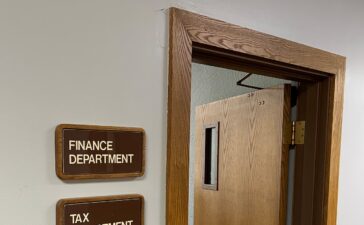Establishing the proper tax withholding is both an art and a science.
Too much withholding means you overpaid throughout the year, giving the government an interest-free loan; too little means you are stuck with a tax bill. This year’s average tax refund was over $3,000 as of March, a 4.8% increase from last year, IRS data shows.
Whether that is too much or too little, you can adjust your withholdings now to set up the right amount for next year. Here are our experts’ tips on how to do just that.
What is tax withholding?
“Tax withholding is a prepayment for your taxes,” Eric Bronnenkant, CPA and head of tax at financial services company Betterment, told Yahoo Finance.
Americans pay taxes when income is earned or received. For most salaried taxpayers, the pay-as-you-go system is reflected every pay period when employers deduct a percentage of paychecks and submit the money to the government.
Taxpayers receive a W-2, the Wage and Tax Statement, in January, tallying up their total salary earned and taxes paid during the year. The total taxes paid aren’t your tax bill; that’s only the money you prepaid in taxes.
Your tax return will reconcile the prepayment to your actual tax liability — and refund the extra amount or require a payment for the shortfall.


What is your withholding goal?
You can project your annual income when determining tax withholding for the coming year. The projection should include foreseeable earnings, such as wages, freelance work, and investment profits.
Plug this information into the IRS’ Tax Withholding Estimator tool for an estimate to prevent unintended over- or underpayments.
“Let’s say a marketing consultant does extra work on the side and makes another $20,000” in addition to their regular salary, Bronnenkant said. “If they didn’t increase their withholding, there’s a good chance that they’re going to owe a pretty significant amount of money when they file.”
Once you have an income projection, consider your withholding goal. Ask yourself, “Do I want to get a refund, break even, or owe?” Bronnenkant said.
Breaking even — or prepaying an amount that nearly matches your tax liability — is a good goal to keep it simple. If you want a good-sized refund or see it as a mechanism for saving, you can increase your withholding to accumulate a refund.
To be the most economically efficient, you can withhold an amount that’s small enough to owe money in April but large enough to avoid penalties. By underpaying the government, you can put that money into a high-yield savings account, earning interest throughout the year before retrieving it to pay your taxes.
“I am OK with owing money,” Bronnenkant said, highlighting that dodging penalties is crucial when under-withholding.”
Taxpayers who owe less than $1,000 are not subject to penalties, and most salaried employees are covered under their W-4 withholding. But if you receive unexpected income — such as a bonus — you should consider increasing your withholding.
You can apply one of the IRS’s two conditions — known as the safe harbor — to avoid fines. That means paying 90% of taxes owed for the current year or 100% of taxes owed for the previous year. The payments should be made in four installments on April 15, June 15, Sept. 15, and Jan. 15.
For instance, if your tax bill was $5,000 last year and $7,000 this year, you can exercise the safe harbor rule to avoid penalties by paying the IRS $5,000, matching 100% of last year’s liability, or paying $6,300, equaling 90% of the current year’s liability. Using last year’s liability, you would make four payments of $1,250 each quarter.
The IRS has a higher requirement for taxpayers earning over $150,000 — they must submit 90% of taxes owed in the current year or 110% of taxes owed last year to apply the safe harbor rule.
The IRS now charges 8% interest on unpaid penalties, up from 3% two years ago. Interest is compounded daily and begins when taxes are due.


How to update form W-4
Taxpayers should review their withholdings at least annually to avoid surprises during tax time.
“My office typically sees one client each week that is not withholding NYC tax or has the wrong state being withheld,” said Kathryn Keane, an enrolled agent and National Tax Practice Institute fellow. Insufficient or wrong withholding leads to unexpected tax bills during filing season, a burden for most taxpayers.
“Back in the old days, people took their checks to the bank, stood in line, and read the stub. With direct deposit, no one looks at their stub,” Keane added.
You can change withholding anytime by requesting a copy of form W-4, the Employee’s Withholding Certificate, from your company’s human resources department and updating it.
The W-4 form calculates your prepayment by factoring in your filing status, potential credits, and estimated income. You can increase or decrease withholdings on W-4 to capture changes in income from freelance work or investment sales.
“Let’s say you decided that because of your side gig it would be a good idea to withhold extra money,” Bronnenkant said, “then you can up your withholding on your paycheck. You can say, ‘I want an extra $50 per pay period withheld.’”
Rebecca Chen is a reporter for Yahoo Finance and previously worked as an investment tax certified public accountant (CPA).
Read the latest financial and business news from Yahoo Finance

















